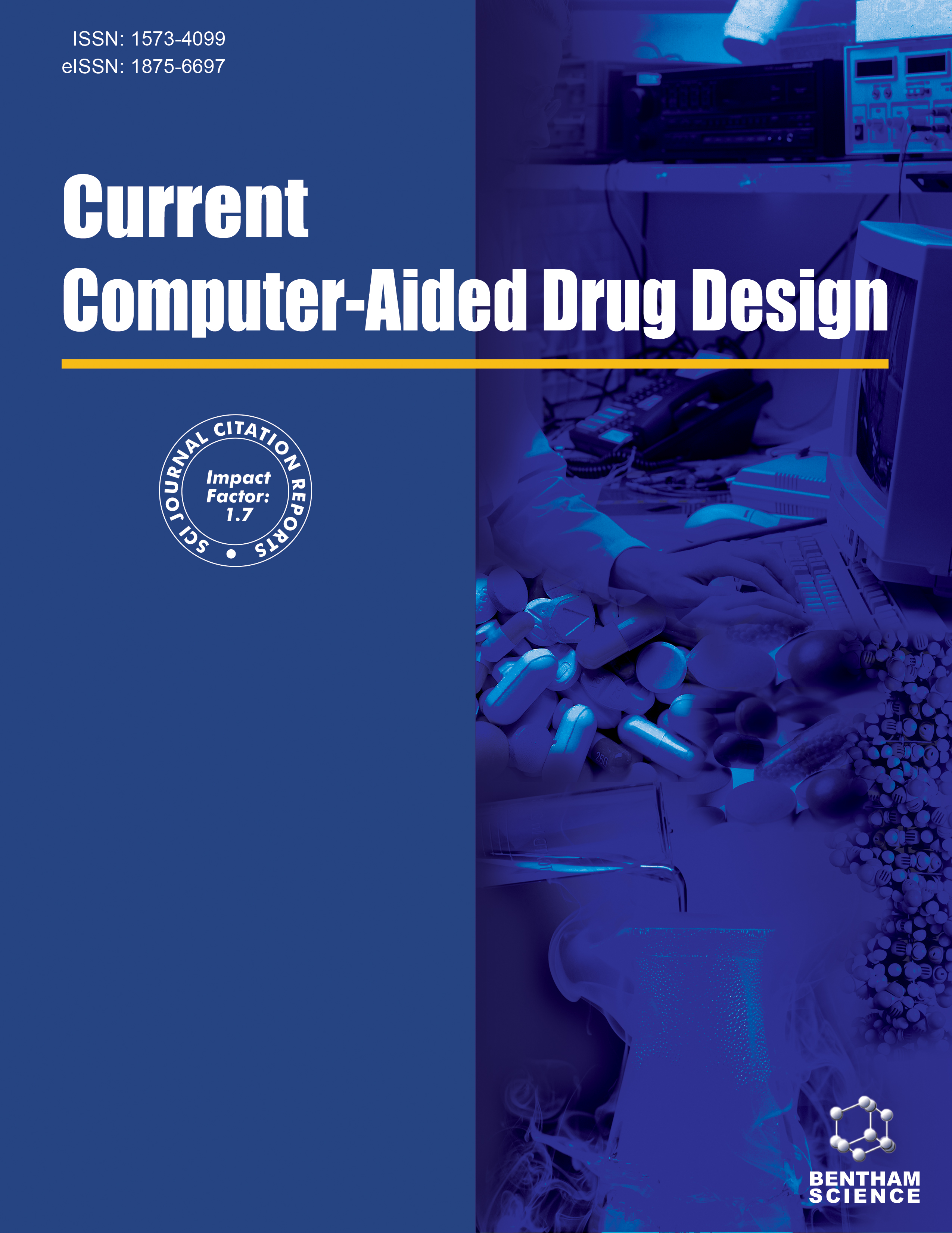- Home
- A-Z Publications
- Current Computer - Aided Drug Design
- Previous Issues
- Volume 5, Issue 4, 2009
Current Computer - Aided Drug Design - Volume 5, Issue 4, 2009
Volume 5, Issue 4, 2009
-
-
Finding Relevant Genes Involved in the Cytotoxicity Mechanisms of Anticancer Biophores
More LessAuthors: Suman K. Chakravarti and Gilles KlopmanIn this study we describe a method to identify important genes that appear to be involved in the cytotoxic mechanisms of key molecular fragments (biophores) contained within the structures of anticancer compounds. The anticancer biophores were mined by the MULTICASE program by analyzing 60 datasets containing 3271 compounds tested against the NCI-60 human cancer cell lines. For each identified fragment, stati Read More
-
-
-
Molecular Dynamics as a Tool in Rational Drug Design: Current Status and Some Major Applications
More LessRational Drug Design has become a well-established discipline in pharmaceutical research. It uses computational chemistry with the aim to discover or study drugs and their related biologically active molecules. The purpose is to reduce the number of targets for a good drug that have to be subjected to expensive and time-consuming synthesis. The advanced methods developed in this field united with the increased potency Read More
-
-
-
Modeling Reality for Optimal Docking of Small Molecules to Biological Targets
More LessAuthors: Christopher R. Corbeil, Eric Therrien and Nicolas MoitessierFrom virtual screening to understanding the binding mode of novel ligands, docking methods are being increasingly used at multiple points in the drug discovery pipeline. It is now well established that the amount (and quality) of information provided to the docking programs greatly influences their accuracy. Ultimately, the docking programs should consider all the factors involved in the ligand/macromolecule binding process. I Read More
-
-
-
Calmodulin in Complex with Proteins and Small Molecule Ligands: Operating with the Element of Surprise; Implications for Structure-Based Drug Design
More LessAuthors: Dora K. Menyhard, Gyorgy M. Keseru and Gabor Naray-SzaboCalmodulin plays a role in several life processes, its flexibility allows binding of a number of different ligands from small molecules to amphiphilic peptide helices and proteins. Through the diversity of its functions, it is quite difficult to find new drugs, which bind to calmodulin as a target. We present available structural information on the protein, obtained by X-ray diffraction, nuclear magnetic resonance spectroscopy and mol Read More
-
-
-
Molecular Dynamics Simulations of Intrinsically Disordered Proteins in Human Diseases
More LessAuthors: Jihua Wang, Zanxia Cao and Shuqiang LiRecent structural and genomic studies have clearly shown that many proteins contain long regions that do not adopt any globular structures under native conditions. These regions are termed intrinsically disordered or unstructured, and the proteins with intrinsically disordered regions are called intrinsically disordered proteins (IDPs). Current studies estimate that one third of eukaryotic proteins contain stretches of at least 30 con Read More
-
Volumes & issues
-
Volume 21 (2025)
-
Volume 20 (2024)
-
Volume 19 (2023)
-
Volume 18 (2022)
-
Volume 17 (2021)
-
Volume 16 (2020)
-
Volume 15 (2019)
-
Volume 14 (2018)
-
Volume 13 (2017)
-
Volume 12 (2016)
-
Volume 11 (2015)
-
Volume 10 (2014)
-
Volume 9 (2013)
-
Volume 8 (2012)
-
Volume 7 (2011)
-
Volume 6 (2010)
-
Volume 5 (2009)
-
Volume 4 (2008)
-
Volume 3 (2007)
-
Volume 2 (2006)
-
Volume 1 (2005)
Most Read This Month
Article
content/journals/cad
Journal
10
5
false
en


